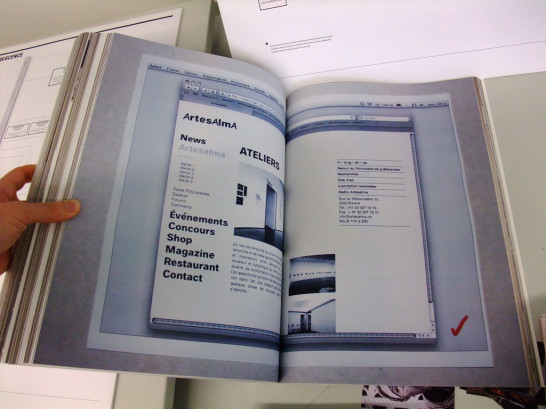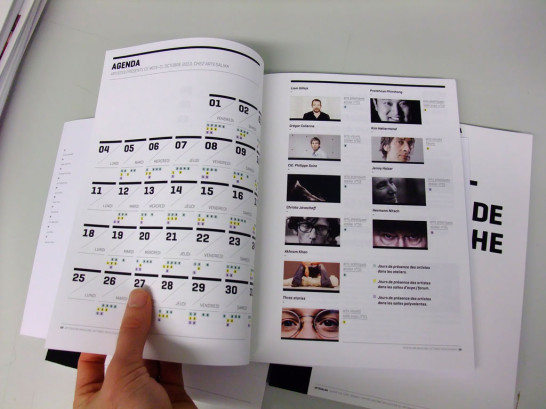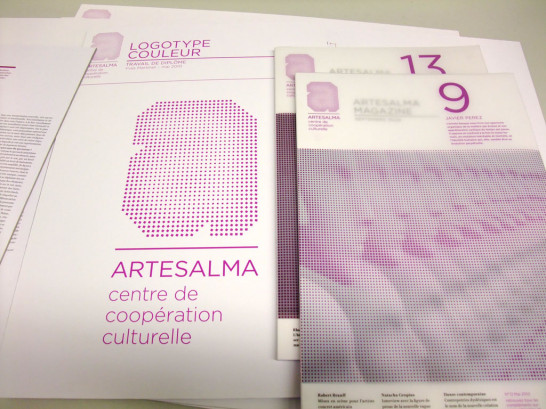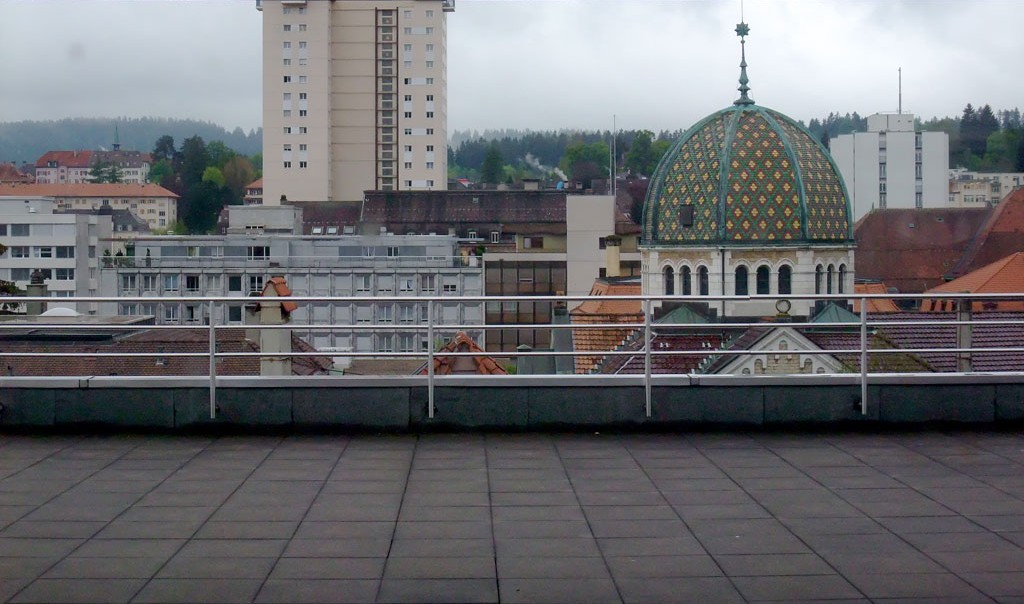Last week, I had the pleasure to participate in the diploma jury of the final class of the Information Design department (teachers: Nadia dalla Costa and Noémie Gygax) at the School of Applied Arts (EAA) in the Unesco-heritage city of La Chaux-de-Fonds.
The diploma works were following a precise assignment, which consisted in the creation of a visual identity for an imaginary art center (Artesalma), comprising a logo, signage, a “graphic chart”, a website, an interactive touch panel, a newsletter, a printed magazine, several video clips, and a radio jingle. A tricky assignment, since an “identity” for an art center is not something that one can create from scratch, but needs a coherence between form (the visual design) and content (the artistic position of the institution). It was fascinating to observe how each student came up with his/her own interpretation of contemporary art, assembling a subjective roster of higher and lesser figures of the artworld to embody their concept.
I was hugely impressed by the craftmanship that was demonstrated, notably in terms of print design. Some examples: Yanis Carnal developed a logo concept where some letters were left blank, to be completed through social interaction by visitors of the art center. This concept was applied through all the documents, including the website and magazine. The items I particularly liked were the printed “charte graphique” (visual identity guideline), bound together with screws and using a 1.1–1.2… page numbering system (making future updates easier). Also, Yanis produced an impressive “research book” in giant format, documenting his creative process, and opting for an original way of presenting the electronic pieces (website, videos), which he first printed in low-rez black and white, then re-photographed in color.

Another strong work came from Manuel Chapuis, who opted for a more classical typographic approach, but developed a highly professional magazine layout, and came up with a complex organizational concept, where the artistic residency spaces played a major role. The interaction between the artists-in-residency and audience was deeply explored, and integrated into the website, the touch-screen infodesk and the print publications.

Finally, I appreciated the project of Yves Martinet, who created a very coherent visual concept based on monochrome dot patterns, and also impressed with a complex video piece. Also worth mentioning is the work of Nicolas Jodry, who went to the extent of drawing a custom open-type font for his project, produced a sophisticated magazine concept based on fold-out pages, and developed a kick-ass lightbox photo gallery script for the website.

Addendum: observations on the “state of internet awareness” among the digital natives
Part of the evaluation was an exam with technical questions on print design, typography, video, web design. In that last field, I noted some surprising patterns in the student’s answers.
– While the students are pretty fluent in HTML, CSS, javascript, they aren’t really aware of the “big picture”. What lies beyond the Dreamweaver interface (server-side scripts, databases…) is shrouded in mystery.
– Practical knowledge about “how to buy a domain name”, “how to get hosting for a website”, is scarce. When asked “what’s the price of a .ch, or a .com domain”, the students give numbers that were correct in 1998. It seems that we didn’t really overcome the old Geocities days, and it’s still a long way to go before those young netizens will claim control of their data…
– The students focus on the short term needs of building a website frontend (which is understandable for an exam project), and care little about long-term maintenance aspects. As a consequence, their interest in Content Management Systems is very limited. When asked, they couldn’t name a single one, neither WordPress, Joomla or Drupal were mentioned. The obvious explanation is that this topic “is not part of the curriculum”. Still, I found this very surprising, since these platforms are omnipresent in today’s webdesign practice.
Note:
The diploma works will be exhibited from June 25-27 at the Neuchâtel Art Center, with an opening on June 24th 6pm.
Further info:
Diploma exhibition: http://www.cifom.ch/_actualites/eaa/article2.html
CIFOM/EAA website: http://www.cifom.ch/cifom/eaa/
